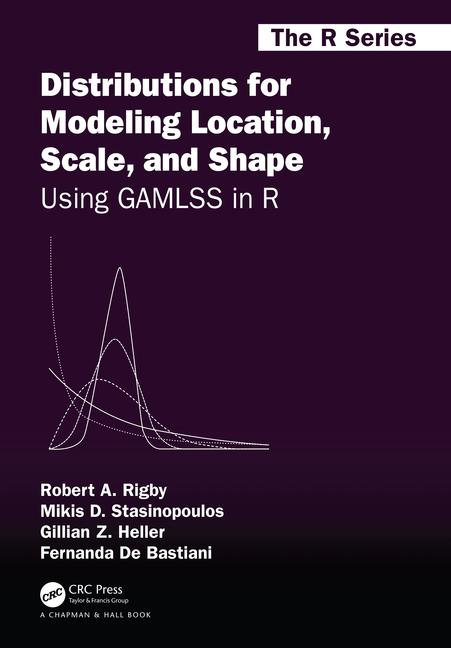flowchart TB A[Models] --> B(automatic \n selection) A --> C(declared\n selection) B --> G[automatic \n interaction] B --> H[set up \n interaction] G --> D(NN, RT) H --> E(LASSO, \n Ridge, \n Elastic Net, \n PCR ) S --> M[step-wise] S --> N[boost] C --> S(LM, AM )
Selection of terms
Introduction
step-wise selectionboostingmodelling
interactions
selection
Stepwise Selection (procedures)
- forward,
- backwards,
- stepwise
Stepwise Selection (con.)
3-models
currentmodel \(C\)lowermodel \(L\)- could be the
nullmodel
- could be the
uppermodel, \(U\). \(U\)- could be the
saturatedmodel
- could be the
Stepwise Selection in GAMLSS strategy A.
| steps | Lower | Direction | Current | Direction | Upper | Creates | Given | |
|---|---|---|---|---|---|---|---|---|
| 1 (\(\mu\)) | \(L_{\mu}\) | \(\leftarrow\) | \(C_{\mu}\) | \(\rightarrow\) | \(U_{\mu}\) | \(F_{\mu}^{(1)}\) | \(C_{\sigma}, C_{\nu}, C_{\tau}\) | |
| 2 (\(\sigma\)) | \(L_{\sigma}\) | \(\leftarrow\) | \(C_{\sigma}\) | \(\rightarrow\) | \(U_{\sigma}\) | \(F_{\sigma}^{(2)}\) | \(F_{\mu}^{(1)}, C_{\nu}, C_{\tau}\) | |
| 3 (\(\nu\)) | \(L_{\nu}\) | \(\leftarrow\) | \(C_{\nu}\) | \(\rightarrow\) | \(U_{\nu}\) | \(F_{\nu}^{(3)}\) | \(F_{\mu}^{(1)},F_{\sigma}^{(2)}, C_{\tau}\) | |
| 4 (\(\tau\)) | \(L_{\tau}\) | \(\leftarrow\) | \(C_{\tau}\) | \(\rightarrow\) | \(U_{\tau}\) | \(F_{\tau}^{(4)}\) | \(F_{\mu}^{(1)}, F_{\sigma}^{(2)}, F_{\nu}^{(3)}\) | |
| 5 (\(\nu\)) | \(L_{\nu}\) | \(\leftarrow\) | \(F_{\nu}^{(3)}\) | \(\rightarrow\) | \(U_{\nu}\) | \(F_{\nu}^{(5)}\) | \(F_{\mu}^{(1)}, F_{\sigma}^{(2)}, F_{\tau}^{(4)}\) | |
| 6 (\(\sigma\)) | \(L_{\sigma}\) | \(\leftarrow\) | \(F_{\sigma}^{(2)}\) | \(\rightarrow\) | \(U_{\sigma}\) | \(F_{\sigma}^{(6)}\) | \(F_{\mu}^{(1)}, F_{\nu}^{(5)}, F_{\tau}^{(4)}\) | |
| 7 (\(\mu\)) | \(L_{\mu}\) | \(\leftarrow\) | \(F_{\mu}^{(1)}\) | \(\rightarrow\) | \(U_{\mu}\) | \(F_{\mu}^{(7)}\) | \(F_{\sigma}^{(6)}, F_{\nu}^{(5)}, F_{\tau}^{(4)}\) |
Strategy A
library(gamlss2)
f1 <- rent~(area+yearc+location+bath+kitchen+cheating)|
area+yearc+location+ bath+kitchen+cheating|
area+yearc+location+ bath+kitchen+cheating|
area+yearc+location+ bath+kitchen+cheating
m1 <- gamlss2(f1,
family=BCTo, data=da, trace=TRUE, n.cyc=20,
c.crit=0.01)
mfA <- gamlss2(m1, scope=list(lower=~1,
upper = ~poly(area,3)+poly(yearc,3)+(area+yearc+location+bath
+kitchen + cheating)^2),
trace=TRUE, parallel="snow", ncpus=10, k=log(3032),
direction=rep("both",7) )Linear model
\[ \begin{split} \texttt{msLinear:} \qquad &\texttt{rent} \sim \text{BCTo}(\mu, \sigma, \nu, \tau ) \\ &\mu \sim \texttt{poly(area,3)}+ \texttt{poly(yearc,3)} \\ & \qquad +\texttt{location}+ \texttt{bath}+\texttt{cheating}+ \texttt{bath}\\ \log\,&\sigma \sim \texttt{yearc}+\texttt{kitchen}+\texttt{yearc*kitchen}+\\ & \qquad +\texttt{poly(yeatc,3)} \\ & \nu \sim \texttt{yearc} + \texttt{kitchen} \\ \log\,&\tau \sim \texttt{yearc} + \texttt{cheating}. \\ \end{split} \]
Additive smooth model
\[ \begin{split} \texttt{msAdditive:} \qquad &\texttt{rent} \sim \text{BCTo}(\mu, \sigma, \nu, \tau ) \\ &\mu \sim \texttt{pb(area)}+ \texttt{pb(yearc)} \\ & \qquad +\texttt{location}+ \texttt{bath}+\texttt{cheating}+ \texttt{bath}\\ \log\,&\sigma \sim \texttt{yearc}+\texttt{kitchen}+\texttt{yearc*kitchen}+\\ & \qquad +\texttt{pb(yeatc)} \\ & \nu \sim \texttt{yearc} + \texttt{kitchen} \\ \log\,&\tau \sim \texttt{yearc} + \texttt{cheating}. \\ \end{split} \]
Boosting
library(gamboostLSS)
mfboost <- gamboostLSS(list(
mu = rent ~ bbs(area)+bbs(yearc)+
(area+yearc+location+kitchen+bath+cheating),
sigma = rent ~ bbs(area)+bbs(yearc)+
(area+yearc+location+kitchen+bath+cheating),
nu = rent ~ bbs(area)+bbs(yearc)+
(area+yearc+location+kitchen+bath+cheating),
tau = rent ~ bbs(area)+bbs(yearc)+
(area+yearc+location+kitchen+bath+cheating)),
data = da, families = as.families("BCTo"),
control=boost_control(mstop=1000, center=TRUE),
method = "noncyclic")Boosting (continuous)
model
\[ \begin{split} \texttt{mfboost:} \qquad &\texttt{rent} \sim \text{BCTo}(\mu, \sigma, \nu, \tau ) \\ &\mu \sim s(\texttt{area})+ s(\texttt{yearc}) +\texttt{location} \\ & \qquad +\texttt{bath}+\texttt{kitchen}+\texttt{cheating}\\ \log\,&\sigma \sim s(\texttt{area})+s(\texttt{yearc})+\texttt{location}\\ & \qquad +\texttt{bath}+ \texttt{cheating} \\ & \nu \sim s(\texttt{area})+ s(\texttt{yearc}) +\texttt{location} \\ & \qquad +\texttt{kitchen}+ \texttt{cheating} \\ \log\,&\tau \sim s(\texttt{yearc}). \\ \end{split} \]
Neural Network
set.seed(213)
msneural <- gamlss2(rent~n(~area+yearc+location+bath+kitchen+
cheating, size=10)|
n(~area+yearc+location+bath+kitchen+cheating, size=3)|
n(~area+yearc+location+bath+kitchen+cheating, size=3)|
n(~area+yearc+location+bath+kitchen+cheating, size=3),
family=BCTo, data=da)GAMLSS-RS iteration 1: Global Deviance = 37885.661 eps = 0.295880
GAMLSS-RS iteration 2: Global Deviance = 37819.3966 eps = 0.001749
GAMLSS-RS iteration 3: Global Deviance = 37808.0326 eps = 0.000300
GAMLSS-RS iteration 4: Global Deviance = 37802.7383 eps = 0.000140
GAMLSS-RS iteration 5: Global Deviance = 37800.4138 eps = 0.000061
GAMLSS-RS iteration 6: Global Deviance = 37799.374 eps = 0.000027
GAMLSS-RS iteration 7: Global Deviance = 37799.2628 eps = 0.000002 Model
\[ \begin{split} \texttt{msNeural:} \qquad &\texttt{rent} \sim \text{BCTo}(\mu, \sigma, \nu, \tau ) \\ & \boldsymbol{\mu} = NN_{\mu}(\textbf{X}) \\ \log\,&\boldsymbol{\sigma} \sim NN_{\sigma}(\textbf{X}) \\ & \nu \sim NN_{\nu}(\textbf{X}) \\ \log\,&\tau \sim NN_{\tau}(\textbf{X}) \\ \end{split} \]
practical 4
end


 The Books
The Books

www.gamlss.com